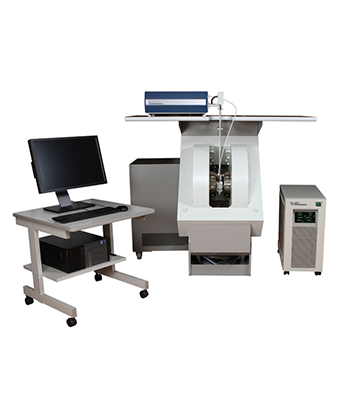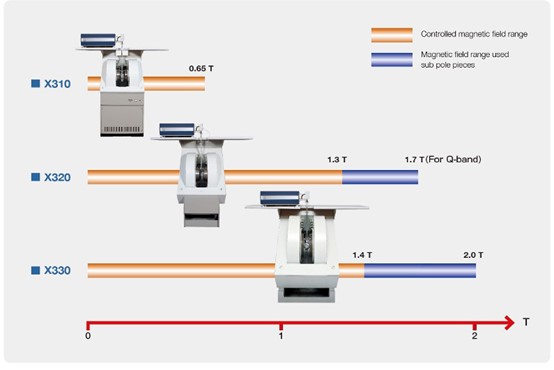Electron Spin Resonance Spectrometer (ESR) Model:JES-X3
Electron Spin Resonance (ESR) is a powerful analytical method to detect, analyze and determine the characteristics of unpaired electrons in a substance. It is clear that the state of electrons in a substance have a strong influence on tis characteristics and functionality, so evaluation by EST is becoming more and more important. Many types of substances, from electronic materials to catalysts, biological samples, can be studied regardless of whether they are solid, liquid, or gas. A wide range of ESR techniques are possible using suitable attachments together with the basic instrument.

-
Recently, it has been widely accepted that even relatively few unpaired electrons in a sample can affect the function of the material, so lower detection limits (higher sensitivity) is required of ESR measurements.The ESR spectrometer JES-X3 series has an improved a low-noise Gunn oscillator providing a 30% improvement in sensitivity compared to previous models.

- Improved sensitivity with the ultra-low noise Gunn oscillator
- Built-in microwave frequency counter
- Intuitive user interface
- Various automatic measurement modes
- 3 types of magnets to suit the application
- Zero cross-field sweep function
- Wide variety of attachments
-
∎ Spectrometer
JES-X310 JES-X320 JES-X330 Dimensions (mm) / Weight (kg) 300×602×602 / 35 ∎ Electromagnet (incl. SHF table)
JES-X310 JES-X320 JES-X330 Dimensions (mm) (kg) 1,400×710×1,105 1,400×803×1,190 1,400×990×1,190 Weight (kg) 520 1060 2300 ∎ Excitation power supply
JES-X310 JES-X320 JES-X330 Dimensions (mm) (kg) Included in
magnetic chassis683×613×895 703×803×1,114 Weight (kg) 300 500 -
- Variation of ESR line shape with temperature
- Paramagnetic vacancy of synthetic quartz glass
- Magnetic nanoparticles and superparamagnetic resonance (2) "Structure and electronic states of magnetic nanoparticles"
- Magnetic nanoparticles and superparamagnetic resonance (1) "Size effects"
- Introduction of Dual Mode Cavity (ES-14040DMC)
- Observation of forbidden transitions in Mn (III) porphyrin complexes
- Introduction of sample angular rotation device (ES-12010)
- Electrolytic ESR - Quantity dependence of supporting electrolyte -
- Electrolytic ESR - Time and Voltage dependence for Anthraquinone anion-
- Electrolytic ESR - Time and Voltage dependence for p-Benzoquinone anion –






